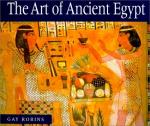|
This section contains 826 words (approx. 3 pages at 300 words per page) |

|
Art and Life. Tjetji's autobiography provides a good example of this literary form in the First Intermediate Period (circa 2130-1980 B.C.E.) and the integration of words and pictures in Egyptian art. It reflects traditions of the late Old Kingdom and anticipates the best of Dynasty 11. It is carved on a stela that is divided into three unequal fields. At the top is a fourteen-line, horizontal, autobiographical inscription reading right to left. The lower left portion depicts Tjetji facing right, in high raised relief, with two members of his staff; a small figure presents offerings before him. The lower right field is an elaborate, five-line, vertical offering-prayer listing wishes for the afterlife.
Revived Tradition. Tjetji's autobiography revives an Old Kingdom literary tradition nearly two hundred years after its disappearance. In Tjetji's era, autobiographies typically praised nomarchs' efforts on behalf of their nomes...
|
This section contains 826 words (approx. 3 pages at 300 words per page) |

|




